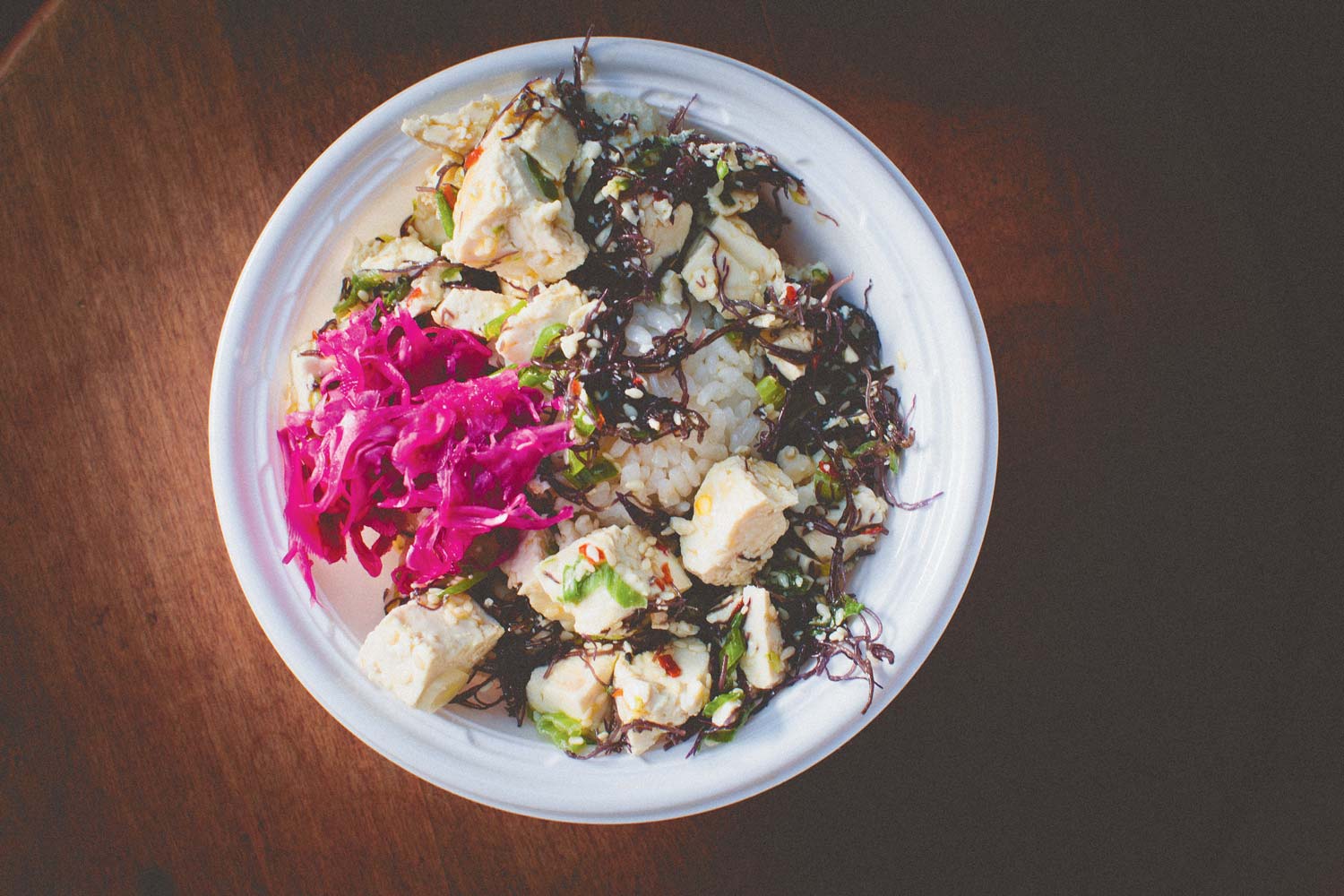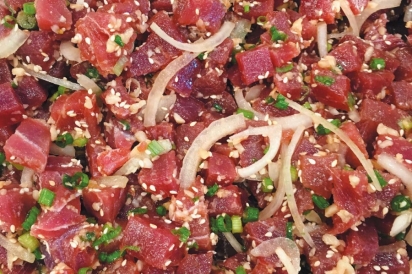Global City: Hawai’ian Poke Gains Popularity on the Mainland
Hawai’i’s popular salad is making waves on the mainland—but respect for island culture sometimes lags behind.
Perhaps I’ve got no business writing about poke. I’ve never visited the Hawai‘ian Islands, after all. I’ve never walked those scenic Pacific beaches or eaten coconut fresh from the tree. Nope, I’ve lived my life in the gritty, grey cities of the Northeast—Philadelphia, Pittsburgh, New York—where the fish is usually flown in, and you’re more likely to hear a curse word shouted in traffic than a friendly aloha.
But if there’s one thing we’re good at in this part of the world, it’s attracting chefs and restaurateurs who deliver flavors from all around the globe. So maybe it’s not surprising that the foods of Hawai‘i have found their way to Philadelphia—especially poke.
For those as new to the concept as I am, poke (pronounced POkay; no accent mark, please) is a simple salad that’s a longstanding tradition in the Hawai‘ian Islands. It’s often made with fish—especially the scraps left over after fillets are cut—but the word poke simply means “sliced,” and the dish is also made with tofu, vegetables, even beef jerky. You slice up the item of choice into bite-sized chunks and toss it with shoyu, sesame oil, salt, the freshest seaweed you can get, chopped onion and maybe some spicy mayo, tobiko or furikake (a Japanese seasoning blend)—everyone does it a little differently—then serve it in a bowl with rice. The result is a refreshing, satisfying umami bomb redolent of the ocean. It’s an under-the-radar classic in Hawai‘i, where it’s sold pre-mixed by the pound in delis and grocery stores.
I first tried poke at the home of a friend, Adam Miyashiro, a fourth-generation Hawai‘i-Okinawan who grew up on the rural side of Oahu, in Kahalu‘u. He now lives in South Philadelphia and is a professor of medieval studies at Stockton University.
Miyashiro returned from a recent visit with a cooler full of limu, a seaweed variety found only in one part of Oahu. Its flavor is an emotional one for Miyashiro, who says the plant, an important part of local food traditions, was nearly wiped out in the 1990s when resort hotels and golf courses diverted fresh water supplies. This critically endangered micro-ecosystems along the coast, from fish and shellfish to seaweeds. Residents organized and won several court cases; limu has since made a comeback. When I taste Miyashiro’s poke—made with ahi and dressed minimally with alaea (Hawai‘ian red-clay salt), onion, green onion, shoyu and sesame oil—the limu packs a bright, salty punch.
The mainland rage for poke started, like so many food trends do, in New York and Los Angeles. As for Philadelphia, in just a few months we’ve seen the openings of Poke Bowl in Northern Liberties and Oishii Poke in Chinatown; another, Philly Poke, is scheduled to open on Race Street soon. These fast-casual restaurants mix customers’ chosen ingredients to order, like a seafood-oriented Chipotle. Sushi restaurants like coZara also make the dish, and it’s popping up on non-Asian menus all over the city (Hungry Pigeon, Standard Tap).
Kiki Aranita, co-owner (with Chris Vacca) of the popular Poi Dog food truck, has been serving Hawai‘ian food in Philadelphia for more than four years, with little competition. Her menu changes daily but always offers a wide range of favorites and what islanders call “plate lunch.” Think Kahlua roast pork, macaroni salad, spam musubi, and rich Kona-coffee-flavored butter mochi. Poi Dog often serves tofu poke, and when Ippolito’s in South Philly can source it, there’s also an ahi poke. It’s delightful, just salty and spicy enough to heighten the freshness and quality of the fish; Aranita has worked hard to perfect the balance of flavors. But get there fast: “We open at eleven, and it’s usually gone by 11:30,” she says.
Many of Poi Dog’s customers are transplants from the islands, and lunch at one of the truck’s stops at City Hall or Love Park often feels a bit like a reunion. Customers even bring Aranita hard-to-find foods from back home.
Aranita, 31, who was born in New York and grew up in Honolulu, sees aloha as the key to Poi Dog’s success—a concept she defines in terms of hospitality, openness, welcome and respect. “It’s not just about selling the food, it’s about sharing something about the culture.” She’s watched with eyebrows raised as the mainland, fastfood-style approach to poke has proliferated, but says she ultimately welcomes new restaurants.
“I’m glad it has people talking about Hawai‘ian food, but it’s painful that some think of it as just a trend or a restaurant concept.” Educating mainlanders about this cuisine and the culture with which it is deeply intertwined is a big part of her mission; she’s a writer as well as a chef and has traveled to the Philippines, Japan, and all over Asia researching the multicultural roots of the food she loves, all of which influences Poi Dog’s food.
That cultural mix, Miyashiro notes, evolved in Hawai‘i as “workers on the sugar plantations came together to eat after long days of work. Exposure to new foods and food cultures has always been a part of the local hybrid cuisine and culture.” Aranita notes that even the less “authentic” dishes she serves are created with those roots in mind: “I think of Kahlua pork tacos as a gateway drug,” she says, laughing. “I sell a lot of tacos. I’m running a business, but I try to make choices that create bridges between cultures.”
Mahmoud Chaabane, 27, owner of Poke Bowl in Northern Liberties, claims no connection with Hawai‘i. He’s been there on vacation a few times, he says, but his culinary roots lie in his North African homeland of Tunisia. He grew up cooking in his mother’s kitchen, moved to Los Angeles to work as an engineer, and vacationed in Hawai‘i, where he “fell in love with the flavors there.”
Chaabane realized that the fast-casual poke concept spreading through LA would fill a need in the Philadelphia market. “People in Northern Liberties want healthy, light, something that can be gluten-free but also quick.” Philadelphians might not be familiar with poke, he explains, but they know sushi and they know the Chipotle model, and these elements make them feel at home with something new.








